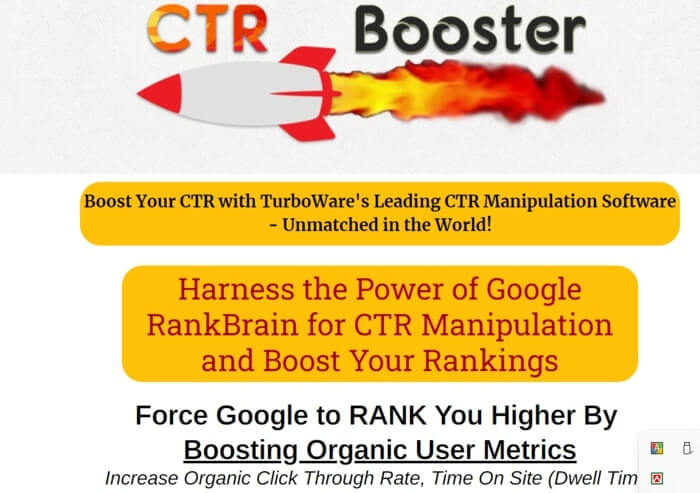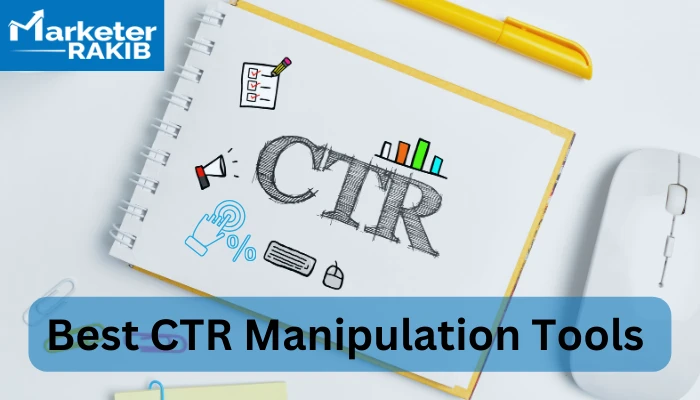Change Your Click-Through Rates with Proven CTR Manipulation Tips
Change Your Click-Through Rates with Proven CTR Manipulation Tips
Blog Article
Enhancing Organic Click-Through Fees With CTR Adjustment
The optimization of organic click-through rates (CTR) is a nuanced undertaking that pivots on recognizing both customer psychology and reliable material discussion. The landscape is swarming with mistaken beliefs and oversimplifications about what really drives CTR.
Understanding Click-Through Rates
Understanding click-through prices (CTR) is crucial for reviewing the performance of internet marketing techniques. CTR measures the percent of customers who click on a specific web link or ad compared to the complete variety of individuals who watch it. A greater CTR indicates that the web content is involving and appropriate to the target audience, while a reduced CTR may signal a demand for optimization.
To determine CTR, separate the number of clicks by the number of impacts and multiply by 100. If an advertisement gets 300 clicks out of 10,000 impressions, the CTR would certainly be 3%. This metric is crucial for analyzing different elements of electronic marketing, consisting of search engine optimization (SEARCH ENGINE OPTIMIZATION), email projects, and social networks marketing.
Additionally, evaluating CTR aids marketing professionals identify which methods yield the ideal results and which need improvement. By concentrating on boosting CTR, businesses can improve their content's exposure and efficiency, resulting in raised traffic and prospective conversions. Recognizing the nuances of CTR is fundamental for any kind of marketing professional intending to optimize their on the internet visibility and take full advantage of return on financial investment (ROI)

The Psychology of Individual Habits
Individual behavior is dramatically influenced by emotional elements that determine exactly how people communicate with online material. Understanding these aspects is essential for maximizing click-through rates (CTR) in natural search outcomes.
Emotional feedbacks also dramatically effect user actions. Content that reverberates psychologically can set off a feeling of urgency or interest, motivating users to click. Furthermore, social proof-- such as individual evaluations or ratings-- can boost count on and encourage interaction, as people typically aim to the behaviors of others to educate their very own decisions.
Moreover, the concept of deficiency can drive clicks - CTR Manipulation. Limited-time offers or unique content produce a concern of losing out (FOMO), compelling users to act swiftly. Recognizing these emotional drivers enables marketing professionals to develop even more compelling material that resonates with their target audience
Efficient CTR Control Strategies
Leveraging emotional understandings can dramatically boost click-through prices (CTR) via targeted manipulation techniques. Among one of the most reliable approaches is the usage of engaging headings that stimulate inquisitiveness or necessity. Wording titles as concerns or integrating numbers can draw in more attention, prompting users to click.
An additional strategy entails maximizing meta summaries to produce a sense of relevance and immediacy. By plainly laying out the services or benefits provided in the web content, you can involve prospective readers and encourage them to click. In addition, using power words-- such as "special," "proven," or "free"-- can boost the charm of your content.
Aesthetic aspects also play an essential duty. Integrating appealing images or thumbnails can attract individuals in and improve CTR. A/B screening different visuals can aid determine which images reverberate finest with your target market.
Finally, guaranteeing that your web content guarantees deliverable value causes higher CTR. They are a lot more most likely to engage when customers view that clicking will certainly offer them with purposeful understandings or remedies. By employing these strategies thoughtfully, marketing experts can efficiently adjust CTR to their advantage while preserving moral requirements.
Usual Myths Regarding CTR
A number of mistaken beliefs border click-through prices (CTR) that can find this lead marketers to make misdirected decisions. While a high CTR recommends that even more customers are clicking, it does not assure sales or conversions.
One more typical belief is that CTR is an isolated metric. In truth, CTR ought to be assessed in conjunction with other efficiency indications, such as bounce price and conversion rate, to acquire a holistic sight of project success.
In addition, some marketing professionals presume that optimizing for CTR alone is sufficient. Focusing exclusively on CTR can lead to clickbait methods that may attract clicks yet stop working to engage customers meaningfully. LinkDaddy CTR Manipulation. This strategy can hurt brand online reputation and cause reduced retention prices
Lastly, there is an idea that CTR techniques are universally reliable. The truth is that optimum CTR techniques can vary substantially across sectors and target audiences, demanding tailored strategies for different market sectors. Understanding these misconceptions is important for creating efficient CTR approaches that line up with overarching advertising and marketing More about the author goals.
Gauging CTR Success
Although high click-through rates (CTR) can suggest effective interaction with web content, measuring their real success calls for an extensive evaluation of several factors. It is necessary to understand the context in which the CTR is accomplished. A high CTR on a misleading title may not equate to significant involvement or conversions, ultimately reflecting badly on the brand name's reputation.
Second, assessing the source of web traffic is critical. Organic website traffic from search engines can represent a robust material method, while clicks from pointless resources might show an absence of targeting. In addition, gauging the succeeding customer actions is essential; assessing metrics such as bounce price, time invested on web page, and conversion rates can offer visit site deeper insights into the quality of the engagement initiated by the CTR.

Final Thought

The optimization of natural click-through rates (CTR) is a nuanced undertaking that hinges on recognizing both individual psychology and effective material presentation. CTR determines the percentage of customers who click on a specific link or promotion compared to the complete number of users that view it. A greater CTR indicates that the material is involving and relevant to the target audience, while a reduced CTR may indicate a need for optimization.
Concentrating solely on CTR can lead to clickbait methods that may draw in clicks but stop working to involve users meaningfully. Furthermore, gauging the subsequent individual actions is important; examining metrics such as bounce rate, time spent on web page, and conversion prices can provide deeper understandings into the quality of the interaction launched by the CTR.
Report this page